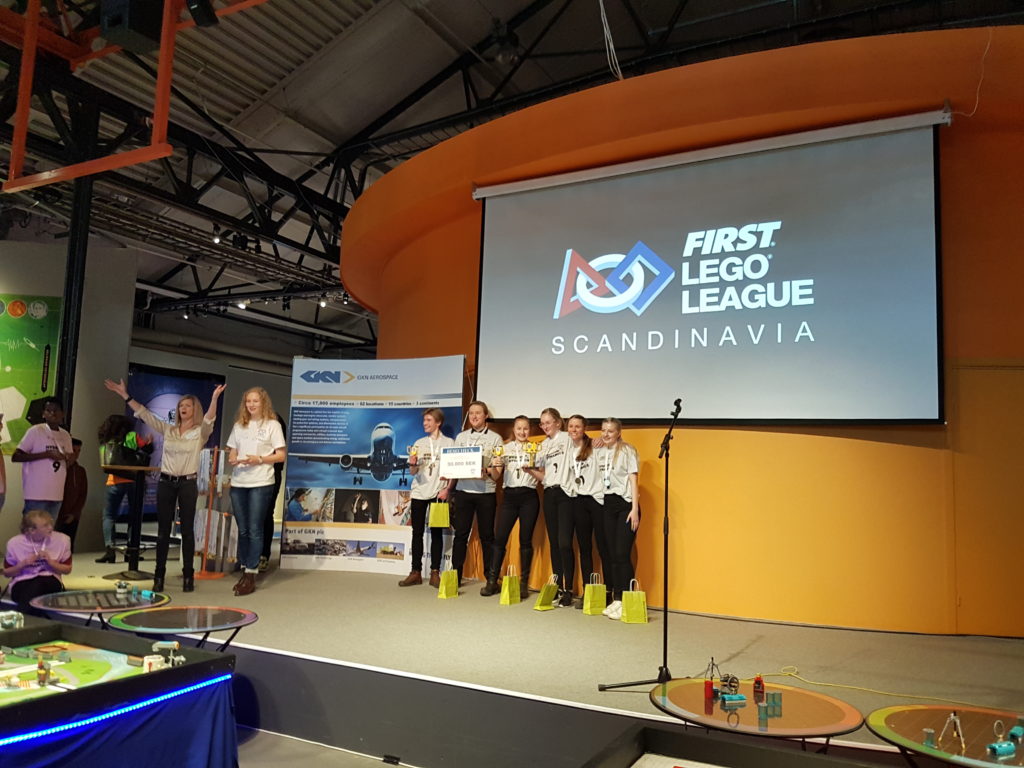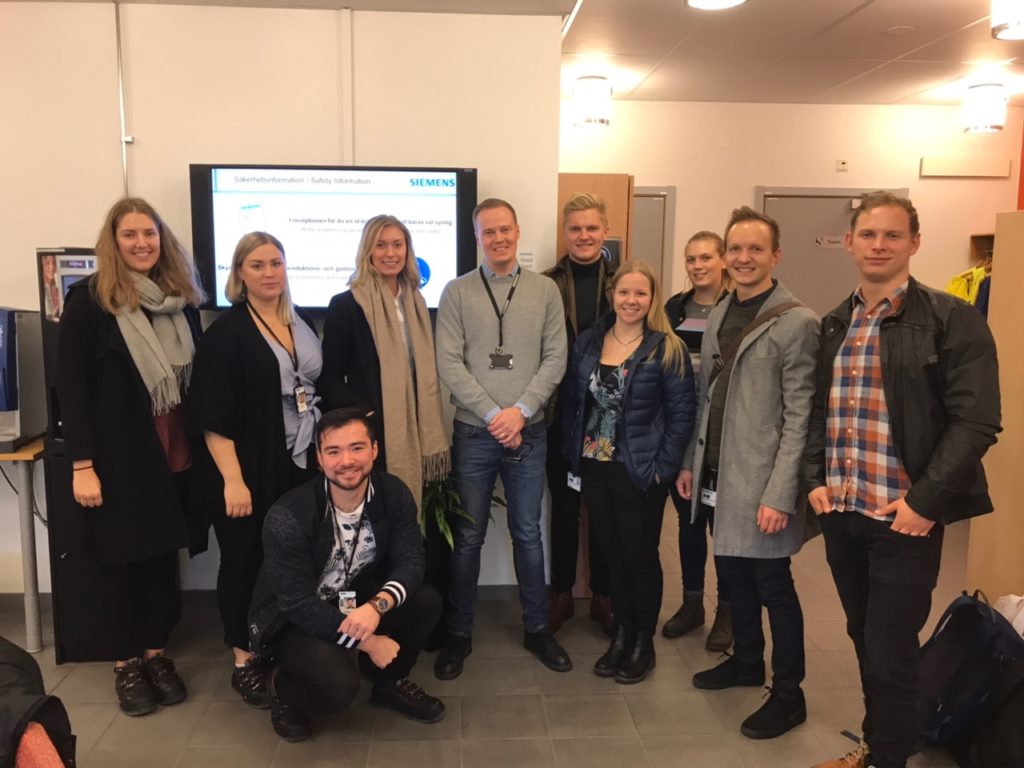First Lego League and new projects
Hello everyone!
Last Saturday, the majority of this year’s trainees volunteered as judges at First Lego League in Trollhättan where GKN was the main sponsor. This was done as a part of the trainee project with the goal of inspiring youths to choose technology. The idea of having to work on a Saturday might not be appealing to everyone, but in this case it was actually great fun!
First Lego League is a competition for elementary school classes where they design and program a lego robot, this is done either in the students’ own spare time or connected to the school’s technical education. They then compete by performing various assignments on a course and aim to get as many points as possible. The teams also conduct a project in connection with this where they come up with solutions to various current issues. For this year, the theme was “Hydro dynamics”, where the students were supposed to come up with solutions to water-related problems, for example today’s high water consumption in the western world or water shortage in developing countries. For example, suggestions were made for applications that log water usage or a water mixer that separates clean drinking water and dirty shower water and then use it for different purposes as a solution to the problems.
At the competition we were assigned different judge roles, ranging from robot judges to core value judges. I myself was a technology judge and got to judge the design and construction of the lego robots as well as the programming. A total of 15 teams participated in the competition, but as always, there could only be one winner: Team Dalenium, who received the honor, a lego trophy and 30,000 in travel allowances to participate in the Scandinavian competition in Oslo. Not bad for a high school class. All teams were extremely talented and had really thought through their projects and design of robots. It was fun to see the drive of the participants and I really think that an event like this is important to increase the technology interests among today’s youths.

At my home department, purchasing, all is going fine. I have control over my projects and I get to meet many new people at the company. Because the rotations of the trainee program are so short, it is not possible to get any responsibility for, for example, a supplier where it is important to have long term relationships. Instead, I am working on projects connected to purchasing, meaning that I get the opportunity to walk around the company and talk with people from the entire organization.
Since last time, Dropship Project has been put on hold since we realized that it partially coincided with Project Balken. In Project Balken we investigate the handling of spares to see if it could be done more efficiently anywhere else than in production. In this project, I have so far met operators in the various workshops as well as material managers and DQR to get an overview of the current situation. The next step is to consider how the control of this might look in the future and then evaluate whether this is possible to implement or not.
I have also recently started a new project that we can call Project Conflict Minerals. A background for this project is that warring groups in the Congo region break and sell minerals to finance their operations, such minerals include: gold, tin, tantalum and tungsten (3T+G). To solve this problem, we try to overcome the demand of minerals suppliers who support warring groups, so it is important to know about how our suppliers work with these minerals.
The idea of my trainee position is that I have purchasing as my home department and that I most likely will get a permanent employment here after the trainee program. Since I do not work so much with my colleagues at my own department, I was a little curious about what one actually does in the daily work of the buyer. I have now been awarded a “fadder” at the purchasing department, namely Elin Elmdahl, a former trainee and now buyer of castings that I get shadow and help alongside my own projects. Elin invites me to supplier meetings and teaches me about the different computer programs you work in as a buyer, which is not the easiest at the beginning, but it’s fun and the days are going fast! Here’s a short interview with Elin:

Years at GKN: 11 years (Thesis 2006, trainee 2007)
Position: Buyer Castings
Describe GKN in three words:
Multinational Aerospace company
What work do you do at the purchasing department?
You have the main commercial responsibility for the suppliers, evaluate new suppliers, purchase materials, negotiate contracts and handling conflicts that occur during current contracts.
What is the best parts of your job?
It is a dynamic environment with many contact areas. External contacts and travel from time to time to suppliers provide extra spice in the everyday life.
What’s the worst parts of of your job?
It includes some administrative work e.g. to review blocked invoices due to an imbalance in the purchase order between goods receipt and received invoices.
Why should one become a buyer?
As a buyer you have a great opportunity to influence and improve cooperation with GKN’s supplier base. GKN is not better than its “Supply Chain”. Unless they deliver on time, the right quality and the right price, GKN will not succeed.
Do you have any other wisdom words you want to send to our readers?
There are many old dragons on GKN. Do not be afraid to ask them for advice. They gladly share their wisdom.
And with that I finish this blog post!
Over and out
/ Emma
